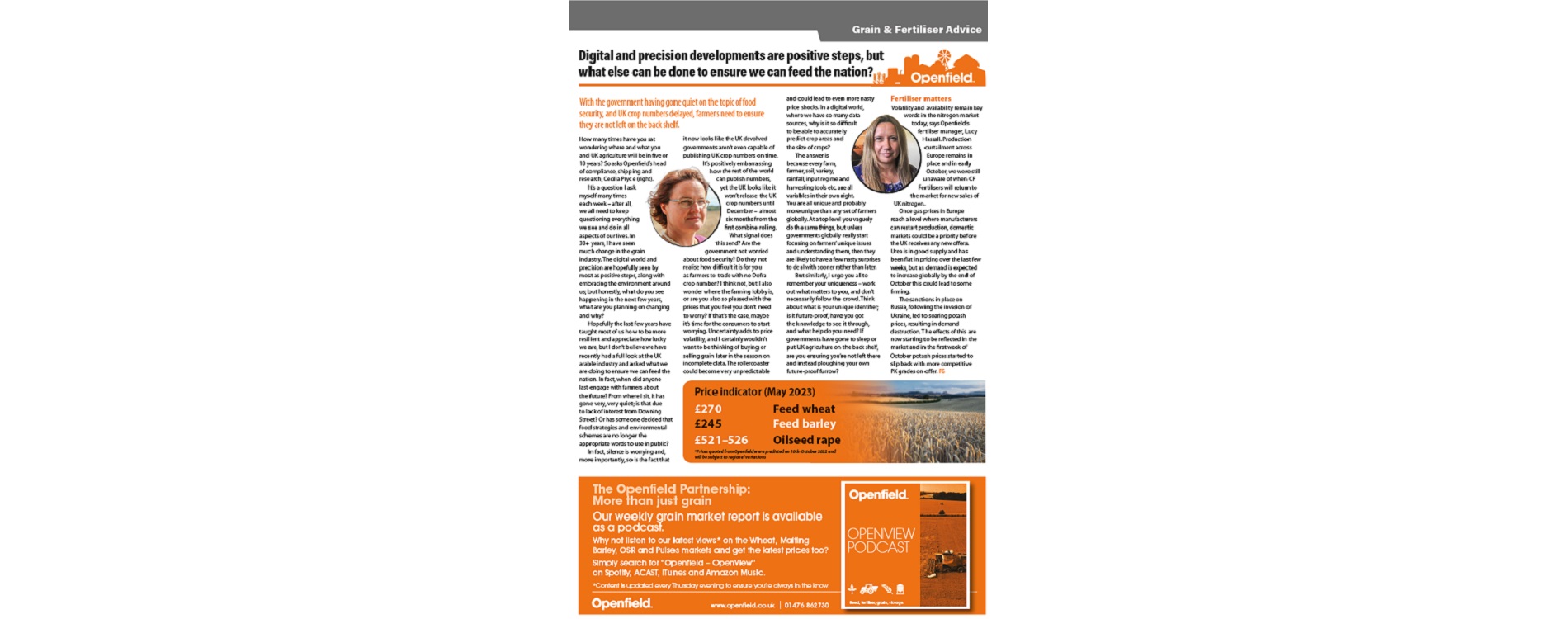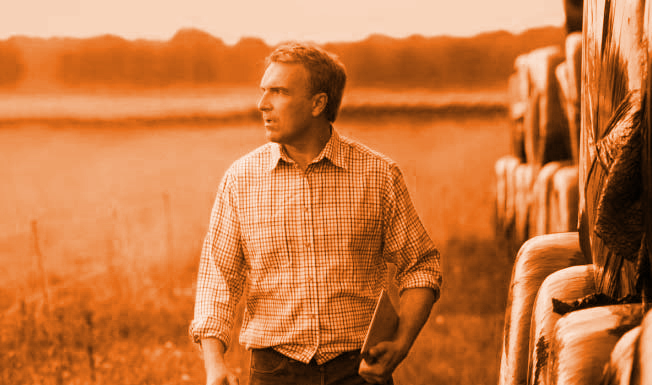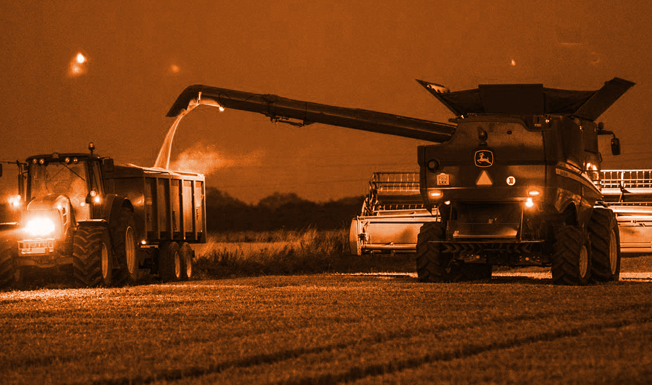Digital and precision developments are positive steps, but what else can be done to ensure we can feed the nation?
With the government having gone quiet on the topic of food security, and UK crop numbers delayed, farmers need to ensure they are not left on the back shelf.
How many times have you sat wondering where and what you and UK agriculture will be in five or 10 years? It’s a question I ask myself many times each week – after all, we all need to keep questioning everything we see and do in all aspects of our lives. In 30+ years, I have seen much change in the grain industry. The digital world and precision are hopefully seen by most as positive steps, along with embracing the environment around us; but honestly, what do you see happening in the next few years, what are you planning on changing and why?
Hopefully the last few years have taught most of us how to be more resilient and appreciate how lucky we are, but I don’t believe we have recently had a full look at the UK arable industry and asked what we are doing to ensure we can feed the nation. In fact, when did anyone last engage with farmers about the future? From where I sit, it has gone very, very quiet; is that due to lack of interest from Downing Street? Or has someone decided that food strategies and environmental schemes are no longer the appropriate words to use in public? In fact, silence is worrying and, more importantly, so is the fact that it now looks like the UK devolved governments aren’t even capable of publishing UK crop numbers on time. It’s positively embarrassing how the rest of the world can publish numbers, yet the UK looks like it won’t release the UK crop numbers until December – almost six months from the first combine rolling. What signal does this send? Are the government not worried about food security? Do they not realise how difficult it is for you as farmers to trade with no Defra crop number? I think not, but I also wonder where the farming lobby is, or are you also so pleased with the prices that you feel you don’t need to worry? If that’s the case, maybe it’s time for the consumers to start worrying. Uncertainty adds to price volatility, and I certainly wouldn’t want to be thinking of buying or selling grain later in the season on incomplete data. The rollercoaster could become very unpredictable and could lead to even more nasty price shocks. In a digital world, where we have so many data sources, why is it so difficult to be able to accurately predict crop areas and the size of crops?
The answer is because every farm, farmer, soil, variety, rainfall, input regime and harvesting tools etc. are all variables in their own right. You are all unique and probably more unique than any set of farmers globally. At a top level you vaguely do the same things, but unless governments globally really start focusing on farmers’ unique issues and understanding them, then they are likely to have a few nasty surprises to deal with sooner rather than later. But similarly, I urge you all to remember your uniqueness – work out what matters to you, and don’t necessarily follow the crowd. Think about what is your unique identifier; is it future-proof, have you got the knowledge to see it through, and what help do you need? If governments have gone to sleep or put UK agriculture on the back shelf, are you ensuring you’re not left there and instead ploughing your own future-proof furrow?
Fertiliser matters
Volatility and availability remain key words in the nitrogen market today. Production curtailment across Europe remains in place and in early October, we were still unaware of when CF Fertilisers will return to the market for new sales of UK nitrogen. Once gas prices in Europe reach a level where manufacturers can restart production, domestic markets could be a priority before the UK receives any newcomers. Urea is in good supply and has been at in pricing over the last few weeks, but as demand is expected to increase globally by the end of October this could lead to some farming.
The sanctions in place on Russia, following the invasion of Ukraine, led to soaring potash prices, resulting in demand destruction. The effects of this are now starting to be reflected in the market and in the first week of October potash prices started to slip back with more competitive PK grades on offer.




